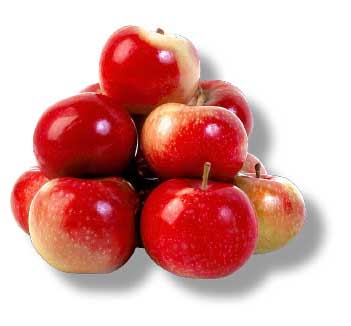10 great health foods for eating well
(The information contained herein are re-directed from Revolution Health.)
Introduction
Here are your best bets for eating well. These 10 health foods are some of the healthiest because they meet at least three of the following criteria:
- Are a good or excellent source of fiber, vitamins, minerals and other nutrients
- Are high in phytonutrients and antioxidant compounds, such as vitamins A and E and beta carotene
- May help reduce the risk of heart disease and other health conditions
- Are low in calorie density, meaning you get a larger portion size with a fewer number of calories
- Are readily available
Almonds
Why eat almonds? These tear-shaped nuts are packed with nutrients - fiber, riboflavin, magnesium, iron and calcium. In fact, almonds have more calcium than any other nut - 75 milligrams (mg) in one serving (about 23 almonds). Also, one serving of almonds provides half of your body's Recommended Dietary Allowance (RDA) of vitamin E.
Like all nuts, almonds provide one of the best plant sources of protein. And they're good for your heart. Most of the fat in almonds is monounsaturated fat - a healthier type of fat that may help lower blood cholesterol levels.
Apples
Why eat apples? Apples are an excellent source of pectin, a soluble fiber that can lower blood cholesterol and glucose levels. Fresh apples are also good sources of vitamin C - an antioxidant that protects your body's cells from damage. Vitamin C also helps form the connective tissue collagen, keeps your capillaries and blood vessels healthy, and aids in the absorption of iron.
Blueberries
Why eat blueberries? Blueberries are a rich source of plant compounds (phytonutrients). As with cranberries, phytonutrients in blueberries may help prevent urinary tract infections.
Blueberries may also improve short-term memory and promote healthy aging.
Blueberries are also a low-calorie source of fiber and vitamin C - 1 cup of fresh blueberries has 84 calories, 3.6 grams of fiber and 14 mg of vitamin C.
Broccoli
Why eat broccoli? Besides being a good source of calcium, potassium, folate and fiber, broccoli contains phytonutrients - a group of compounds that may help prevent chronic diseases, such as heart disease, diabetes and some cancers. Broccoli is also a good source of vitamins A and C - antioxidants that protect your body's cells from damage.
Red beans
Why eat red beans? Red beans - including small red beans and dark red kidney beans - are good sources of iron, magnesium, phosphorus, potassium, copper and thiamin. They're also an excellent low-fat, low-calorie source of protein and dietary fiber. Red beans also contain phytonutrients that may help prevent chronic diseases, such as cardiovascular disease and cancer.
Salmon
Why eat salmon? Salmon is an excellent source of omega-3 fatty acids - a type of fat that makes your blood less likely to form clots that may cause heart attacks. Omega-3s may also protect against irregular heartbeats that may cause sudden cardiac death, decrease triglyceride levels, decrease the growth of artery-clogging plaques, lower blood pressure and reduce the risk of stroke.
In addition to being an excellent source of omega-3s, salmon is low in saturated fat and cholesterol and is a good source of protein.
Spinach
Why eat spinach? Spinach is high in vitamins A and C and folate. It's also a good source of riboflavin, vitamin B-6, calcium, iron and magnesium. The plant compounds in spinach may boost your immune system and may help keep your hair and skin healthy.
Sweet potatoes
Why eat sweet potatoes? The deep orange-yellow color of sweet potatoes tells you that they're high in the antioxidant beta carotene. Food sources of beta carotene, which are converted to vitamin A in your body, may help slow the aging process and reduce the risk of some cancers. Sweet potatoes are also good sources of fiber, vitamins B-6, C and E, folate and potassium. And like all vegetables, they're fat-free and relatively low in calories - one small sweet potato has just 54 calories.
Vegetable juice
Why drink vegetable juice? Vegetable juice has most of the vitamins, minerals and other nutrients found in the original vegetables and is an easy way to include vegetables in your diet. Tomato juice and vegetable juices that include tomatoes are good sources of lycopene, an antioxidant that may reduce the risk of heart attack, prostate cancer and possibly other types of cancer. Some vegetable and tomato juices are very high in sodium, so be sure to select the low-sodium varieties.
Wheat germ
Why eat wheat germ? At the center of a grain of wheat is the wheat germ - the part of the seed that's responsible for the development and growth of the new plant sprout. Though only a small part of the wheat seed, the germ is a highly concentrated source of nutrients, including niacin, thiamin, riboflavin, vitamin E, folate, magnesium, phosphorus, potassium, iron and zinc. The germ also contains protein, fiber and some fat.













1 Comments:
I'm going to highly recommend this web site!
https://decor-ksa.com/
http://caravank.com/factory/
http://caravank.com/for-sale-in-riyadh/
http://caravank.com/withdrawn-for-sale/
http://caravank.com/withdrawal-rooms/
7:04 PM GMT+8
Post a Comment
<< Home